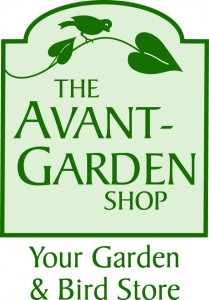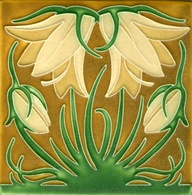 We’re in the media! ?Check out a blog post about us on our web designers site.
We’re in the media! ?Check out a blog post about us on our web designers site.
 CHEX airdate: Friday March 7th, 2014 Click here to watch this episode of The Garden Gate If I do say so myself, we have a wonderful website. Our web designers, Black Cap Design, ?set up our site quite a few years ago and we’ve been adding to it ever since! It began with the main informational website and then a shopping cart was added for online ordering. ?We were able to add lots of products and found over the years that many people would find us because of the website. More recently we’ve added this blog to be able to share information appropriate for gardeners and birders who frequent the shop. We have also added links to our YouTube, Twitter accounts and also our Facebook page. I need to do more on Pinterest…and maybe Instagram…but you can’t do it all! We feel it’s very important to keep this information fresh and current. It takes a lot of time, but is worth it in the end. No point in having a website that is old and stagnant which then frustrates your customers. Working with our web designers has been a breeze over the years. We highly recommend Carrie and Pat from Black Cap Design. Locally owned too! ?
CHEX airdate: Friday March 7th, 2014 Click here to watch this episode of The Garden Gate If I do say so myself, we have a wonderful website. Our web designers, Black Cap Design, ?set up our site quite a few years ago and we’ve been adding to it ever since! It began with the main informational website and then a shopping cart was added for online ordering. ?We were able to add lots of products and found over the years that many people would find us because of the website. More recently we’ve added this blog to be able to share information appropriate for gardeners and birders who frequent the shop. We have also added links to our YouTube, Twitter accounts and also our Facebook page. I need to do more on Pinterest…and maybe Instagram…but you can’t do it all! We feel it’s very important to keep this information fresh and current. It takes a lot of time, but is worth it in the end. No point in having a website that is old and stagnant which then frustrates your customers. Working with our web designers has been a breeze over the years. We highly recommend Carrie and Pat from Black Cap Design. Locally owned too! ?

Come in to win a Squirrel Buster!
Starting?Monday Feb. 10th, drop by the store for your secret code. ?Use the secret code to enter to win one of 150 Squirrel Buster bird feeders!
You can enter online or by phone. Enter early. Enter OFTEN! No purchase required.
Prizes available:
120 Squirrel Buster Standard bird feeders
18 Squirrel Buster Finch bird feeders
12 Squirrel Buster Plus bird feeders
The Squirrel Buster line of bird feeders really do work! ?We have many happy customers who can attest to that fact. ?If you’d like to learn more about the different types of Squirrel Buster feeders, visit the manufacturers website. www.bromebirdcare.com On their website you can also watch some video of the birds enjoying the feeders!
Chex air date: February 21st, 2014
Click here to watch this episode of The Garden Gate.
 Grackles and starlings can be so annoying when they find your bird feeders. ?They eat so much, come in large flocks and scare away the prettier birds like cardinals. (Photo: www.billhubick.com)
Grackles and starlings can be so annoying when they find your bird feeders. ?They eat so much, come in large flocks and scare away the prettier birds like cardinals. (Photo: www.billhubick.com)
During this episode of The Garden Gate I’ll speak with local naturalist and author about these birds and we’ll discuss ways to keep them out of your bird feeders.
Did you know that they don’t like safflower? ?That’s one way to discourage them. Also the Squirrel Buster Plus bird feeder has a few design tricks that also discourage the grackle.
Drew Monkman is the author of Nature’s Year in the Kawarthas and also an updated version called Nature’s Year?which is available at The Avant-Garden Shop. A great book for the cottage, for teaching children about the every day changes in our environment and just about anyone else who loves exploring the outdoors.
Chex TV air date: Feb. 7th, 2014
Click here to watch this episode of the Garden Gate.
 Not everyone is a fan of bats. ?But bats eat 1000’s of mosquitoes everyday and should be encouraged in our gardens and yards. ?You can put up bats houses to attract them. We carry a few styles made locally by Animal House Creations.?
Not everyone is a fan of bats. ?But bats eat 1000’s of mosquitoes everyday and should be encouraged in our gardens and yards. ?You can put up bats houses to attract them. We carry a few styles made locally by Animal House Creations.?
Bats are on a steady decline all across the country because of a fungus called?White nose syndrome.
A local naturalist will be our guest this week. Drew Monkman, will tell us more about this terrible disease and how it is affecting our bats.
CHEX TV air date: Friday Jan. 24th, 5-6pm
Click here to watch this episode of the Garden Gate.?
 People often ask how I find the products that I carry in the shop because they are so diverse and unique. Besides visiting gift and craft shows I also keep my eyes open when we are travelling. These tiles are the result of just such a trip.
People often ask how I find the products that I carry in the shop because they are so diverse and unique. Besides visiting gift and craft shows I also keep my eyes open when we are travelling. These tiles are the result of just such a trip.
My husband and I are fans of the architect Frank Lloyd Wright.? Over the last few years we have visited a number of his homes including Falling Water in Pennsylvania. Beautiful!
The visitors centres for these homes have little gift shops. We had noticed these beautiful tiles with some of his designs on them. I made note of the artists name and when we returned I began my research. I contacted the company and received information including a beautiful catalog.?
We felt more research was necessary, so we decided to take a road trip the next year to the Motawi studio in Ann Arbour Michigan.? There we received a personalized tour of the studio and saw every step of how their tiles are made.
There are 28 steps involved in the creation of these tiles! ?First a design needs to be chosen. The design needs to work in such a way to hold the glazes that they use within their edges. So the design often is adapted to work with their style. Once a design is approved, a template is made. Then a mold. Using their exclusive locally sourced clay a tile is created using a 60 ton press. It is hand trimmed and then fired in a kiln overnight.? Once removed from the kiln, an artist like ?Emily? adds the glazes in the appropriate sections. (You’ll see the name of the person who glazed the tile on the back of each piece) Once completed it is put back in the kiln for another firing.
If during any of these steps a problem arises, and the tile isn’t perfect it is either sold as a second or destroyed.
The results are here for you to see. Stunning pieces that can be displayed in a frame, on an easel or even worked into another tiling project.
Nawal Motawi founded Motawi Tileworks more than 20 years ago. A University of Michigan art school graduate with an interest in applied arts, Nawal learned tilemaking at Detroit?s storied Pewabic pottery. She returned to Ann Arbor after a few years and began making her own tiles in a small Ann Arbor garage and selling them at the local farmers? market. The rest is history. Today, Motawi Tileworks carries on the legacy of fine American art tile. They take great pride in their work, in creating something timeless and beautiful.
You?ll notice Nawal?s influence in the arts and crafts, art nouveau movement. Simply beautiful designs.
See more tiles on our website here.
CHEX Air date: Friday January 10th, 2014
Click here to view this episode of The Garden Gate.
We have been having some extremely cold weather conditions since late November this year. ?Ice storms, strong wind conditions and high snowfall mean food sources are covered. Birds need to eat almost constantly during the day to retain enough energy through our long winter nights. Here are a few things you can do to help.
 FOOD
FOOD
Keep feeders full. Birds are more attracted to feeders that are full. ?They can see the seed and then know that it’s worth their while to visit your restaurant.
Keep feeders clean. If seed gets frozen or some moisture gets into the feeder, the seed may not dispense properly or it may go moldy or rancid. Checking your feeders often and changing seed regularly is very important. ?If birds seem to be ignoring your feeders, it may be that the seed is bad or jammed inside the feeder.
Provide lots of peanuts for extra energy. Whether in the shell or out of the shell. Birds love peanuts! Peanuts are a favourite for Blue Jays, Woodpeckers, Nuthatches and Chickadees. Even cardinals like peanuts! Click this link to visit our website to see some peanut and suet feeders.
Suet is also an excellent food source through the winter. Make sure that you get good quality suet without filler such as cornmeal and millet.? Suet with cornmeal can get moldy easily as the cornmeal holds moisture. Avoid cornmeal. The more fat, peanuts and sunflower seeds the better!
 SHELTER
SHELTER
Besides food you can also provide shelter. We carry this roosting box. Birds will crowd together inside the roosting box to share energy. If you’re going to make a box yourself, it’s similar to a bird house, but there are no ventilation gaps. This allows the space to warm up as the birds huddle together.
Birds will also huddle together in the branches of coniferous trees like spruce, pine and cedar. Plant coniferous trees next spring and put your feeders close by so the birds can go back and forth between the tree and the feeder.
Note: Cardinals love cedar trees!
 WATER
WATER
Heated bird baths are great in the winter. They keep the water just above freezing and birds flock to this easily accessible water source. You don’t need to worry if they bathe, because their feathers will move the water away from their bodies. They need to keep their feathers clean of dust, dirt and insects. ?Their bodies are also warm so the water evaporates before it can freeze. It?s important to keep birds well fed so they are generating energy to help keep their body temp up.
Birds can melt snow in their mouths, but it takes a lot of extra energy to do that, so they prefer and open water source. If there is no other open water source near you, you’ll be surprised at how many birds you’ll see at your bath!